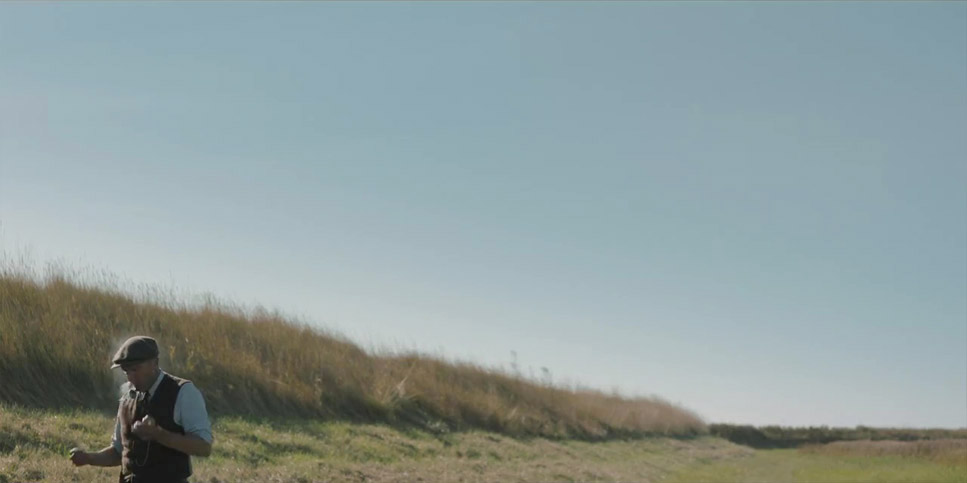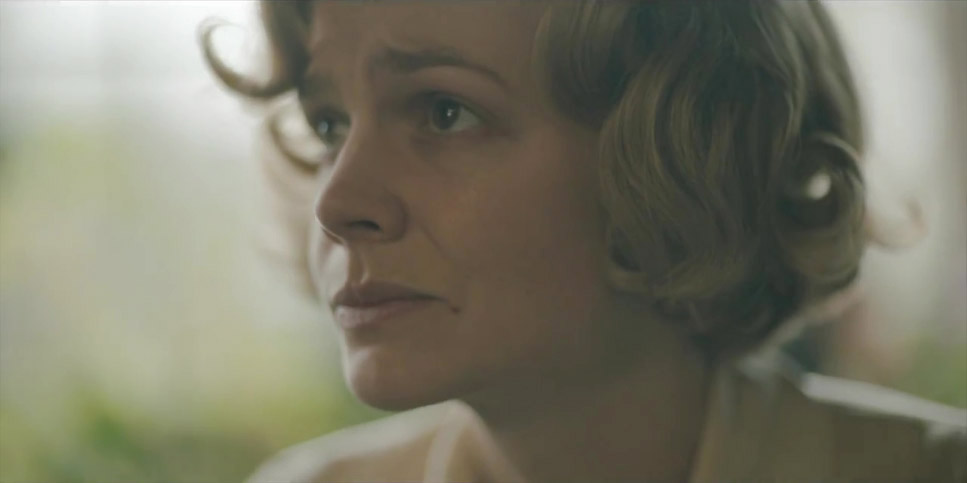| |
“He was incredibly adept with his camera choices and his way of shooting. He’s very, very clever – instinctive, intuitive and clever, Simon is, and he understands what film can do. So I felt that was all exciting. I think he was shooting it in an interesting way with Mike Ealy, the cinematographer. So I felt in good hands.” |
| |
Actor Ralph Fiennes on director Simon Stone* |
I’m racking my mind trying to recall a film that looks remotely like The Dig. On paper it’s an historical story of a passionate man overlooked for his lack of education hired to dig out whatever may be hiding in a burial mound. The site is in the Suffolk countryside on land owned by a sickly widow who employs him. There are two subplots that are as engaging as the main narrative and it’s all told in 1939 as Britain edges ever closer to a war with Germany. There is nothing commercially special about the script. I found its ordinariness somewhat refreshing. But if you take the talent in front and behind the camera and apply it to this script, what you get is quite magical. It’s a producer’s gift to see what this script could be and shepherd it into the right hands. My instincts were to be somewhat guarded as not much actually happens and when it does, it’s not in a punch the air ‘Hurrah!’ sense but the film is presented in such startling visual choices at times and the acting is so good you simply forget who the actors are despite their fame.

Suffolk’s neighbouring county, Norfolk, is nicknamed ‘The Big Sky’ for the flatness of its landscape and its one eighty degrees of blue (or these days mostly grey) expanse forever visible. Well, Suffolk doesn’t want for similar environments and director Stone sets off an original path taking full advantage of this area’s geographical peculiarity. In fact often the land is pushed so far down in the frame, that the figures strolling on it are often literally cut off at the knees or waists. This is in no way classically photographed and at first I remarked how odd it was until the style began to seduce me and I started to look forward to every scene change. Almost every film made stays true to the convention of filming actors in close ups, medium shots and wide shots. Editorially this practice is yet to be usurped because it’s the way we see people in life (with the position changes cut out of course). This accepted mise-en-scene is unlikely to change while we are shaped like human beings but everything else is up for grabs for those with fertile imaginations. And Stone’s is, if this film is anything to go by. While he commands the way we see, he lets the actors deliver the emotional beats. I could not imagine placing my faith in two better talents we have in this little island country of hours. Ralph Fiennes’ Suffolk accent is faultless and he is utterly convincing as Basil Brown, not a Dark Mark in sight. Carey Mulligan has already proved her willingness to inhabit a part absolutely with Steve McQueen’s Shame as a commitment benchmark. She has the manner and lottery-DNA that marks her out for attention but here, her Edith Pretty is restrained and with her hand on heart in some discomfort, she never makes her Lady of the Manor anything less than noble, true but also sympathetic. Great actors nullify and consign lazy clichés, cyphers and tropes to the rubbish heap. No matter the character and whatever tired, worn out judgements anyone would like to attach to their positions or employment, great actors make you feel like they are real people, as of course they were in ‘real life’.
Two supporting actors are also on fine form and provide great entertainment in their own romantic subplot. Fresh from Emma is the chiselled Johnny Flynn playing Rory, a cousin roped in to help with the excavation. Also on hand helping out is Lily James as Peggy Piggot. It was interesting for James to play a supporting part given her Mrs de Winter in the Rebecca remake (my one word review? Why?) and a starring role in Mamma Mia Here We Go Again. But she shines as a new wife married to man who is so obviously gay, you have to believe she must have been ‘tired and emotional’ when she got hitched. But then again, homosexuality didn’t exist in 1939. Irony is taking such a risk these days. The filmmakers fall back on the charming cliché of trying to make very attractive movie stars dowdy by simply having them don a pair of glasses. OK, maybe it was for historical accuracy’s sake but to make Lily James unattractive, you’d have to ask her to leave the room. The give and take between the two is delightful and is, in some ways, the consummation of what currents lurk beneath the waters of each of the leads – surrogates for what might have been. Despite the age difference and Brown’s unusual habit (and a telling one at that) of not opening his wife’s daily letters, there are definitely sparks. A broken dinner date is ineffably sad and again, all down to a director having the smarts and confidence to get out of the way of actors at the top of their game.

Rounding off the main supporting cast is a lovely turn from Archie Barns as Edith’s son, Robert. He cycles thirty odd miles to renew his friendship with a man who has become in some ways a father figure. Brown’s wife, May played by Monica Dolan is by no means a sidelined character as she may have been in lesser movies while romance was gently simmering away from her control. Brown’s commitment to Ms. Pretty was strictly professional with the delicious but distant possibility of him becoming anything else to this lonely but fiercely independent woman.
The Dig is low voltage entertainment but extremely good low voltage entertainment. After the ascendency of superheroes on the big and small screen in the past twelve years, it’s always lovely to witness the fortunes of real people in real situations performed with such care and invested with such earned and heartfelt emotion. Lovely work, all.
|